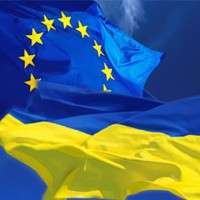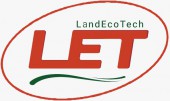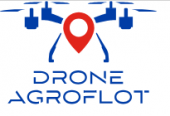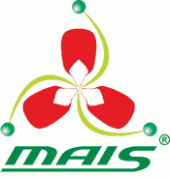News
09.04.2025
Ukraine and the EU after June: Three Scenarios of Developments

The current state of Ukraine's trade regime with the EU, introduced in 2022, will end in June this year. Experts have predicted what economic relations may be like after this date, and what variants of developments should be prepared for.
Ukrainian chicken with European genes
The era of globalization seems to be coming to an end and after a period of turbulence a new era will begin, so this is an important historical moment, stressed Alex Lissitsa, President of UCAB, during the 9th online discussion from the Ukrainian Agribusiness Club – “The Future of Ukraine-EU Trade Regime: Position of the Ukrainian Agribusiness Community”
“I am sure that cooperation between the EU and Ukraine can be even stronger than in the last three years. We should talk and look for opportunities for cooperation, its continuation after June this year,” he added.
“Ukraine is actually a pillar for the EU farming community, and the sooner there is liberalized trade, the better for both sides,” Deputy Minister of Economy, Ukraine’s Trade Representative Taras Kachka stressed.
“In Brussels, we see a lot of media and expert attention on the topic of cooperation between the EU and Ukraine, especially in terms of agriculture. Everything that is voiced by me or my colleagues is usually quoted and this affects the negotiations,” he said.
Tariffs are the worst instrument for regulating international trade, the focus should be on trade flows.
Taras Kachka, Deputy Minister of Economy, Ukraine’s Trade Representative: “Ukrainian exports maintain price stability, cover deficits, support processors in the EU. In addition, Ukraine buys a lot of inputs (inputs) from the European Union. Thus, every chicken raised in Ukraine has Polish or German DNA. Therefore, in the medium and long term, Ukraine is the solution to many of the EU's challenges in agriculture”.
Planning horizon for farmers
Ukrainian farmers need to know how and what they will be able to export to the EU after June 5. The Ministry of Agrarian Policy and Food of Ukraine has been negotiating the extension of autonomous trade measures (ATMs) since October last year, said Oksana Osmachko, Deputy Minister of Agrarian Policy and Food of Ukraine.
“The war is not over yet, and the free trade regime should be extended until a long-term solution is adopted, which may be Article 29 of the Association Agreement. We are asking to extend the work of the ATMs until the end of this year, because on June 6, our farmers need to know how and what to export, how to continue trading with EU countries and how to fulfill their contracts. For the last year, we have been following the established rules and have been a reliable partner for the EU,” – Oksana Osmachko, Deputy Minister of Agrarian Policy and Food of Ukraine.
The role of the agricultural sector for the Ukrainian economy
Until 2022, the agricultural sector played a significant role in shaping the Ukrainian economy, generating between 10 and 20% of GDP at different times. In 2024, Ukrainian agriculture contributed over 15% of Ukraine's GDP. In addition, the agricultural sector is also one of the most important sources of foreign exchange earnings for the Ukrainian economy. Last year, the volume of exports of Ukrainian agricultural products amounted to almost $25 billion, which accounted for more than 59% of total exports.
This was stated by Oleksandra Avramenko, Head of the UCAB European Integration Committee.
“Companies involved in the agricultural sector are also among the largest taxpayers in Ukraine. Last year, agriculture paid 11% of all tax revenues to local budgets. This means that local community budgets depend on tax revenues from the agricultural sector. Local and rural communities are largely dependent on the work of agricultural enterprises,” she explained.
Mutual benefit
After 2022, Ukraine's agricultural exports to the European Union increased significantly due to the inability to export goods to traditional markets such as Asia, the Middle East, and Africa. During the blockade of ports, trade with the European Union helped redistribute the flow of agricultural products worth approximately $5 billion. At the same time, the share of imports from the EU is more than 60%, including machinery, seeds, plant protection products, and fuel.
“The ties between the EU and Ukraine are actually deeper than they seem. And while the Ukrainian agricultural sector is trying to integrate into the food supply chain, the European manufacturing sector is already in Ukraine. If we continue to move in this direction, both sides will only benefit,” – Oleksandra Avramenko, Head of the UCAB European Integration Committee.
Negotiations should be finalized before the expiration of the current ATMs
Ukrainian agribusiness hopes for further liberalization of the Deep and Comprehensive Free Trade Area (DCFTA) arrangements based on Article 29 of the Association Agreement, which will provide domestic producers with stability and predictability, as well as approximation to the European Union, as stated in the agreement.
Nazar Bobitski, Director of the UCAB European Office: “Article 29 of the Association Agreement opens the way for the EU in Ukraine to progressive liberalization of duty-free quotas and tariff rates and is another element of trade regulation. This possibility is built into the Association Agreement to adapt to the new realities of trade between the EU and Ukraine, as well as to respond to the needs of the parties.”
However, the negotiations on Article 29 need to be completed before the current ATAs expire, i.e. by June 2025. If these negotiations are not concluded, Ukraine's trade with the EU will automatically revert to the 2021 version of the DCFTA with more than 20 duty-free quotas, import tariffs, and trade barriers, which will create an economic problem for Ukraine.
According to UCAB experts, a return to the 2021 trade terms will lead to an economic shock: losses in foreign exchange earnings could reach up to EUR 3.3 billion by the end of 2025, GDP losses - 2.5%, and a reduction in tax revenues - up to 4.15%.
Ukrainian agricultural producers will not be able to diversify their exports due to the blockade of Ukrainian seaports, which can only handle bulk products, and all ready-to-eat and packaged products are exported only by Solidarity Paths, which increases the cost of logistics and reduces the competitiveness of Ukrainian products.
Oleksandra Avramenko, Head of the UCAB European Integration Committee: “If we cannot compensate for the loss of traditional markets to European markets, these products may not even be produced, which will affect Ukrainian GDP. In addition to a potential 2.5% loss of GDP by the end of 2025, this will make the National Bank of Ukraine's forecast of a 3.6% GDP recovery impossible. This is what we risk seeing. In such a scenario, there will also be a drop in tax revenues, and since the Armed Forces of Ukraine is fully financed from the state budget, this will also have an impact on our defense capabilities.”
Honey, chicken and other sensitive products
The UCAB sees further trade liberalization for the so-called sensitive products on the basis of the current ATMs, which is a balanced compromise between the European Union and Ukraine, as the ATMs are not based on exports in 2023, but are an arithmetic average of the second half of 2021, 2022, and 2023.
The list of sensitive products currently includes poultry, eggs, sugar, honey, oats, cereals, and corn.
“Not all of these products should remain on the sensitive list. In addition, previous versions of the DCFTA combined raw materials and processed products for some items. For example, duty-free quotas for wheat also included flour and cereals, and the quota for sugar includes maltodextrin. It is worth removing value-added products from the list in order to promote the production of value-added products in the first place,” – Oleksandra Avramenko, Head of the UCAB European Integration Committee.
Recently, there have been outbreaks of bird flu in European countries, which has led to a decrease in the production of both poultry meat and eggs and their processed products, so the absence of Ukrainian poultry products on the EU market will lead to further price increases for processors and final consumers. The situation with sugar is similar: The EU increased its sugar imports in 2021-2022 and subsequent marketing years due to a decline in domestic production. Prices reached 800 euros per ton, so Ukrainian supplies stabilized the industry.
Ukraine is also one of the key suppliers of honey to the European market, whose needs are estimated at 170 thousand tons per year. About ¼ of the imported honey can come from Ukraine, whose supply volumes have always exceeded the established limits.
Corn is another important commodity supplied to the EU from Ukraine: in 2014, it was 7 million tons, and in 2019, the record level was 14 million tons.
At the same time, last year russia was also one of the key suppliers of corn to the European Union, and according to some reports, by 2035 russia will be the largest grain producer in the world.
According to the European Commission's medium-term forecast, the EU will need 20 million tons of corn annually by 2035, so further cooperation between Ukraine and the EU will only benefit EU consumers.
“Ukraine is always there for us as a reliable and stable trading partner that maintains the balance of trade and consumption in the EU. We have already been added to the EU animal feed supply chain, where Spain is the largest buyer, and if the restricted trade, in particular for wheat, is returned, Ukraine may lose up to EUR 1 billion,” emphasized Oleksandra Avramenko.
Three possible scenarios
According to UCAB experts, there are three possible scenarios after June 6, 2025.
The first is a revision of the DCFTA based on Article 29, a long-term agreement that will provide predictable access for Ukrainian food to the European market until Ukraine's possible EU membership in 2030.
“There are only two months to realize this scenario. We still do not see an official position from the European Commission. The opinions of some European Commissioners have been voiced, but this is not the final official position of the EC,” explained Oleksandra Avramenko.
The second scenario is a return to the DCFTA in 2021. For Ukraine, this is actually a “rollback” to May 2022, when the Solidarity Lanes were not operating at full capacity and the Danube ports were exporting only bulk products. Restrictions on access to traditional markets will result in a huge shock to the Ukrainian economy, and prices for processors and end users in the EU will rise. The need for imports from third countries, such as Brazil, will increase, and the overall result will still not be the best for Ukrainian and European stakeholders.
Under the third scenario, an exceptional extension of the current ATMs with the same list of restrictions on sensitive goods is possible. This would give both sides a little more time to invoke Article 29 of the Association Agreement and finalize negotiations by the end of 2025. This means relatively stable conditions for processors and end users in the EU, as well as a predictable trade flow between the parties.
The impact on every agricultural producer
Although small farmers do not always export their crops directly, they still depend on future decisions in Brussels. After all, if duties and quotas are returned, they will receive less payment for their goods. This was reminded by Maria Didukh, director of the Ukrainian National Agrarian Forum (UNAF).
Maria Didukh, director of the Ukrainian National Agrarian Forum (UNAF): "Let's look at the situation with sugar. Sugar factories are limited in growing their own raw materials. 60% of sugar beet is purchased from small farms, so the latter should know how much to plant this year. In addition, with the beginning of the full-scale invasion, when ports were blocked and traders were forced to look for other ways to sell their products, medium-sized producers switched to this area, quickly found partners in the EU and started their own exports. Instruments such as the ATMs and the Solidarity Roads make it possible to export directly. Therefore, the Ukrainian National Agrarian Forum stands for an alliance between Ukraine and the EU to feed the world."
Waiting for dialogue
Alice O’Donovan, Secretary General, European Liaison Committee for Agricultural and Agri-Food Trade (CELCAA), emphasized that an open dialogue between the two sides is needed. And given that Ukraine will inevitably become a member of the EU, it is better “to take Ukrainian agriculture under our wing already now to ensure a smooth transition”.
The sugar market in Europe, which has been in deficit for many years, naturally attracts imported goods from all over the world. And if it wasn't Ukrainian sugar, it would have come from Brazil or Central America because producers needed it, explained Yuriy Sharanov, President of the European Industrial Sugar Users Association (CIUS).
"It is good that Ukraine reacted quickly. It is perfectly suited for the role of sugar supplier. After all, sugar is an important raw material and disruptions in its supply should not be allowed," he emphasized.
Most likely, the need for sugar imports will remain. According to the expert, Ukraine can guarantee the supply of up to 500,000 tons of sugar with a possible increase in this amount.
The original material was taken from the AgroPortal.ua





































































































































































